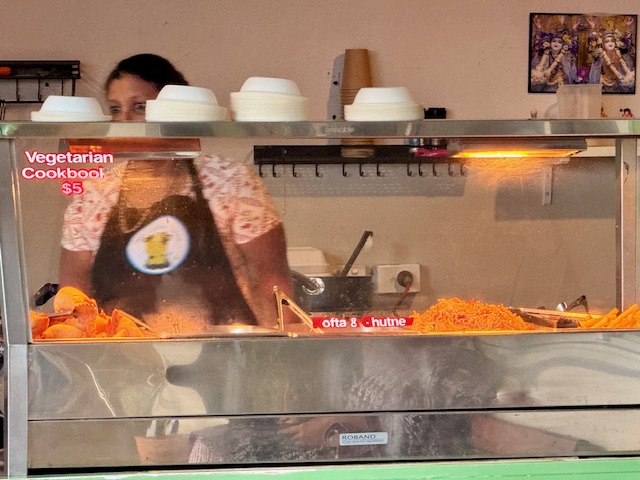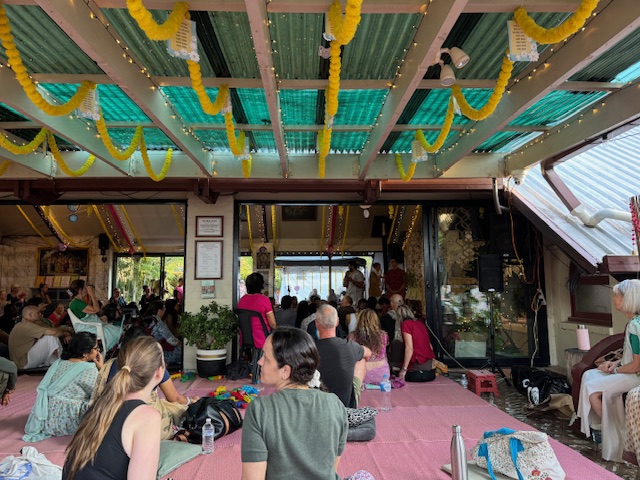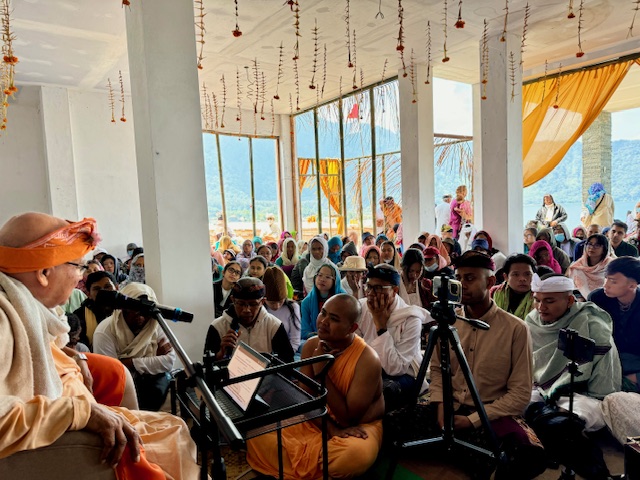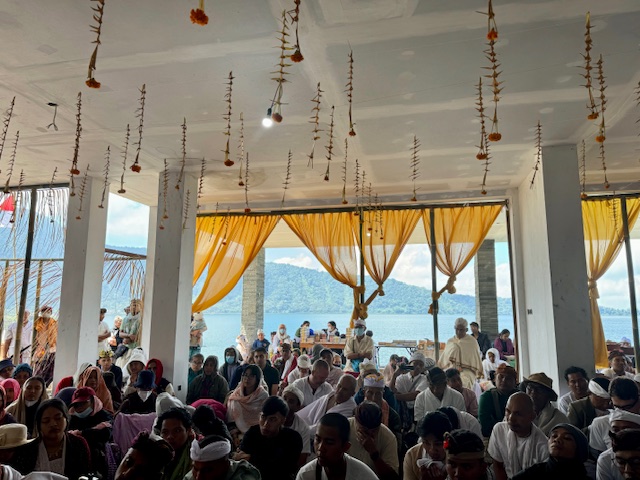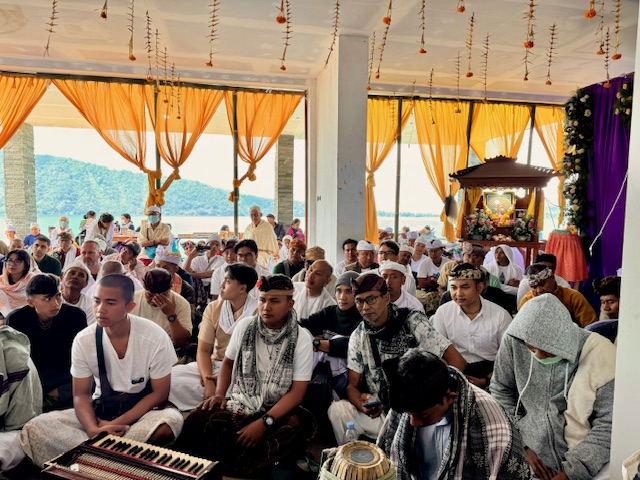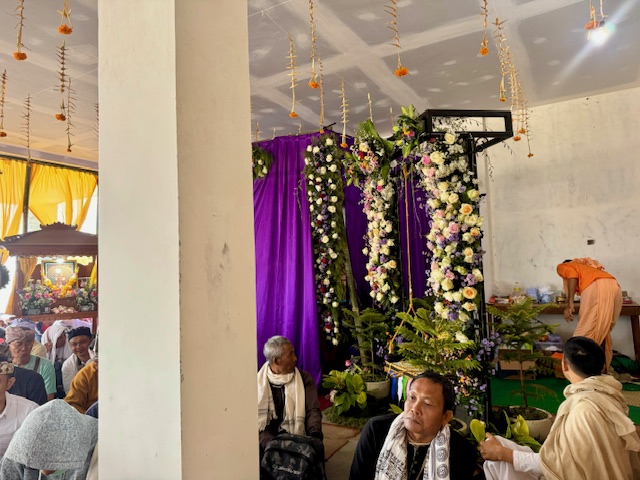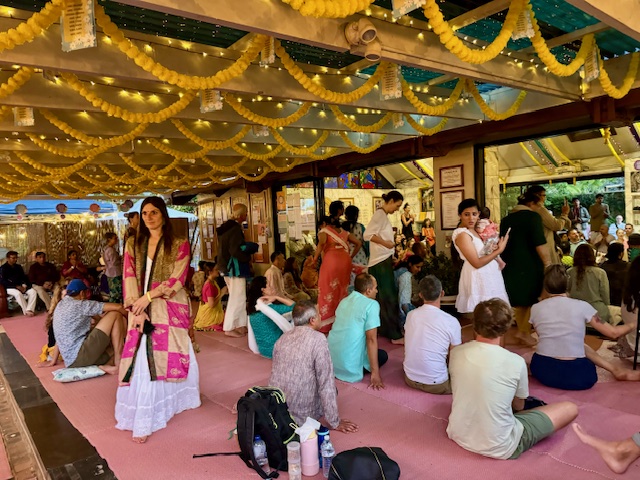
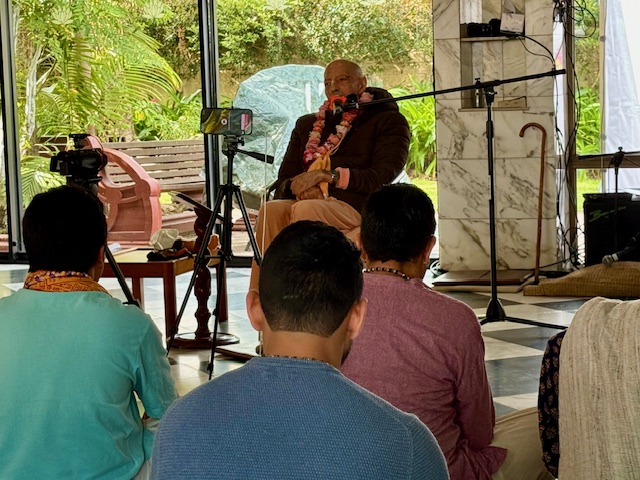
There were over 600 registrations for the kirtan festival at New Govardhana and that didn’t include the local devotee community which added another 200-300 devotees to the total number.
The festival went over the long weekend, starting Friday night and ending Monday at midday. There were a lot of different kirtan leaders and it was nice to see so many devotees chanting in ecstasy.
Mukunda Maharaja gave the first morning class and retold how Srila Prabhupada started Iskcon in New York and established hearing and chanting as the main principles of the Hare Krishna movement.
